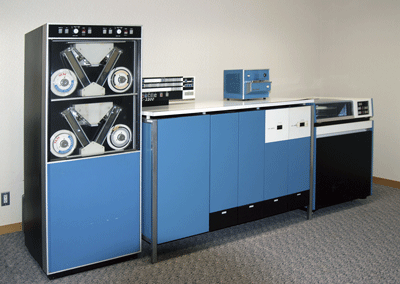

- Home >
- Artifacts of IP Heritage >
- 2008 >
- NEAC Series 2200 model 50
NEAC Series 2200 model 50

| Manufactured in | 1966 |
|---|---|
| Manufactured by | NEC Corporation |
| Owner | Katayanagi Institute (Tokyo University of Technology / Nihon Kogakuin College) |
| Location of historical materials | Katayanagi Institute (Tokyo University of Technology / Nihon Kogakuin College) 1404-1, Katakuramachi, Hachioji City, Tokyo 192-0982, Japan |
| Visitor information | Not open to the public (Ask for a visit) |
| Contact | Research Support Center, Tokyo University of Technology Tel.+81-42-637-1163 |
NEAC Series 2200 was based on the one-machine concept. It had the same uniform architecture throughout the lineup, from low-end to high-end models. Increasing data processing volume could be handled by shifting to a higher grade model, and program assets could be inherited and reused. NEC Corporation (NEC) announced five models (model 100,200,300, 400 and 500) in May, 1965, and added low-end model 50 in August 1966 and top-end model 700 in November 1968.
The central processing unit, the input-output devices and software of model 50 were compatible with those of each NEAC Series 2200 model.
Moreover, model 50 used various new technologies: overall adoption of core memory and IC, and adoption of Japanese COBOL first in the world. The main memory capacity was from 4K to 16K characters. Model 50 was equipped with disk pack drives in addition to magnetic tape drives and magnetic drum units, etc. So, it was able to access a large amount of data by a random access method. Up to 32 NEAC WRITERs were able to be connected as I/O typewriters. Model 50 was able to be used for both online billing processing and batch-processing as post-processing such as ledger processing and tabulation. So, data processing features was flexible and highly efficient.
A full system of Model 50 including a magnetic disk unit and magnetic tape drives is preserved by Katayanagi Institute.
